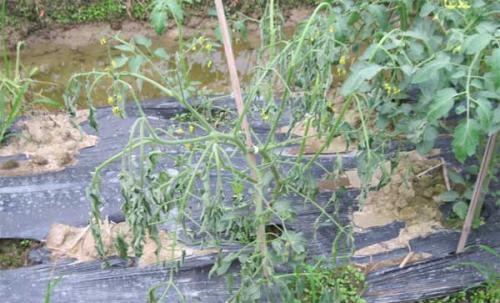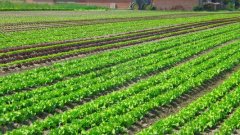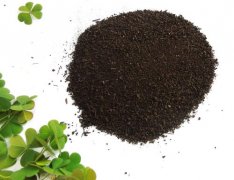Tomato bacterial wilt: how to control tomato bacterial wilt? The best treatment for bacterial wilt
Tomato bacterial wilt is a very serious disease in growing tomatoes. If it is not well treated, it is easy to cause significant damage. How should it be treated? Let's take a look.

Pathogenic bacteria:
The disease is caused by Pseudomonas solanacearum, which belongs to non-fluorescent Pseudomonas aeruginosa (non-fluorescent pseudomnonad), gram-negative, rod-shaped, with a size of 0.5-0.7 × 1.5-2.5 μ m, most of them have no mobility, but a few have polar flagella, and the bacteria will accumulate poly- β-hydroxybutyrate particles. Irregular round or oval, sticky comb-like colonies with red center and white surrounding were formed on TZC medium. This colony morphology can be used for simple identification of Ralstonia solanacearum. Ralstonia solanacearum has great variability and can be divided into four or five physiological races according to its pathogenicity or infected host. The pathogens isolated from Taiwan all belong to the first physiological race, that is, the host range is the widest. It can infect a variety of physiological races of Solanaceae, but in this physiological race, due to the different kinds of harmful hosts, it is subdivided into at least eight pathotypes, in addition, according to the differences in physiological and biochemical characteristics. Ralstonia solanacearum can be divided into four biochemical types. Ralstonia solanacearum isolated in Taiwan belongs to the third or fourth biotype, but a few strains are the second biotype.
Symptoms:
The symptoms of the disease are affected by plant age, the rate of disease progression and environmental factors, but the main symptoms are rapid withering, dwarfing and leaf yellowing. When the tomato is hot and humid in spring and summer, and the tomato grows vigorously, the originally green tomato can often be seen whenever it clears up after the rain. The leaves droop and wither rapidly in a few days, but the diseased plants still remain green and become symptoms of bacterial wilt, so the disease is called "bacterial wilt." If the tomato plant is older or the environmental factors are not suitable, making the disease progress slowly, you can first see the leaves prolapse (Epinasity), the heart leaves curl, and then the leaves wither from top to bottom and there are adventitious roots on the diseased stem; sometimes the disease will suddenly stop in the middle of the disease, resulting in the dwarfing leaf veins blackening and the leaves slowly yellowing. If you cut open the diseased stem, you can see that the vascular bundles turn brown and squeeze the diseased stem by hand, which will overflow white bacterial mud (Ooze) on the cross section of the diseased stem. The most convenient and reliable way to diagnose the disease is to cut the diseased stem into small segments and then cut it longitudinally in half, and throw it into a transparent glass filled with water. after a few minutes, you can see milky smoke lines running around the diseased stem, which is composed of the pathogen of the disease. with the above phenomenon, it can be judged to be tomato bacterial wilt.
Disease ring and disease environment:
This pathogen is a soil-borne pathogen. The bacteria living in the soil can invade the plant through the wound of the host root, and multiply in the xylem of the vascular bundle, which can produce mucinous polysaccharides (Slimy polysaccharide) to block the catheter, hinder the transport of water, and cause tomato plant withering and death. The pathogenic bacteria propagate in plants and survive the winter in plant residues and soil. According to the literature, this pathogen can survive for as long as ten years in the soil where non-host plants are planted continuously, and more than four years in fallow fields. The soil temperature is 25 ~ 30 ℃ and the PH value is 6.2 ~ 6.6. The moist soil is a good environment for pathogens to live. The damaged plants can also release a large amount of bacteria from the roots to the soil, thus re-infecting the adjacent healthy plant roots. The transmission of the disease between roots and roots has been confirmed to occur in the field. This mode of transmission may be one of the reasons for the gradual spread of most plants in the field if only local plants are damaged. Although the seedlings cultivated from the curved bed of contaminated bacteria sometimes look disease-free, they may have been latently infected by the pathogens. After being transplanted to Honda, the disease can spread with the seedlings. In addition, shoes and farm tools attached to soil may also spread germs. It is generally believed that Ralstonia solanacearum can survive in soil for a long time, but its survival length varies with different strains and is also affected by soil environmental factors. Moist soil is suitable for the survival of bacteria, while dry and flooded soil is disadvantageous to its survival, and acidic soil is not suitable for . The occurrence of the disease is closely related to temperature and soil moisture. High temperature and humidity is the most suitable for the disease. It is usually less common when the temperature is lower than 20 ℃, and low soil moisture is also disadvantageous to the disease. Therefore, the tomato planted in summer or high temperature and humid season has a high incidence and serious damage, while planting in winter rarely occurs. There seems to be no relationship between soil texture and the occurrence of the disease, and the soil pH of most cultivated crops in Taiwan is also suitable for the occurrence of the disease. if there is a nodule nematode in the soil, it can promote the infection rate of bacteria and increase the occurrence of the disease.
Host range: Ralstonia solanacearum has a wide host range and can infect more than 200 kinds of plants. The common hosts in Taiwan are Solanaceae, such as tomatoes, tobacco, sweet peppers, eggplants, potatoes, etc., as well as peanuts, birds of paradise, strawberries and perilla.
Prevention and control methods: cultivate disease-resistant varieties: tomato strains have different susceptibility to bacterial wilt. At present, there are disease-resistant varieties, but highly resistant varieties have yet to be bred. Disease-resistant breeding must be carried out locally in order to develop varieties that are resistant to local strains, and disease-resistant varieties bred abroad may not necessarily have resistance in local areas.
Use healthy transplant seedlings: avoid using germ-containing soil as a seedbed.
Rotation: rotation with non-host crops, especially with rice, is the most effective, usually when rice is used as a previous crop, it can reduce the concentration of bacteria in the soil and reduce the incidence of diseases.
Application of soil additives: greenhouse experiment confirmed that SH soil additives can effectively control bacterial wilt, field experiments have yet to be carried out, if the same effect, the control of bacterial wilt will be a good news.
Biological control method: the antagonistic bacteria in the root have a strong inhibitory effect on Ralstonia solanacearum. If a practical antagonistic strain can be selected, the biological control method can also play a preventive effect. In order to be practical, biological control needs long-term research and development.
Other tillage measures: planting in autumn and winter, turning over the soil or irrigating the soil during fallow, removing the remaining diseased plants and weeds in the field, avoiding replanting in diseased fields, avoiding the introduction of irrigation water from diseased fields, and so on, can prevent or reduce the occurrence of diseases.
- Prev

Vegetable planting techniques: methods for growing vegetables, techniques and methods for growing vegetables
If you grow vegetables for the first time, you'd better grow wild vegetables. The so-called wild vegetables, such as Chuanqi, red Phoenix vegetables, sweet potato leaves, ginseng grass, aloe, carrots, Zhaohe vegetables and so on. Wild vegetables are easy to grow and high in energy, but they have a special taste, so insects do not like to approach them and do not need pesticides.
- Next

Kitchen waste into organic fertilizer: kitchen waste as organic fertilizer, how to use kitchen waste to make organic fertilizer?
In many European countries, when dealing with food waste and falling leaves in the courtyard, they often use their own courtyards to pile up naturally, and there are also people who use machines to carry out high-speed fermentation. In the early days of Taiwan, farmers all had compost houses and water and fertilizer ponds, which could provide us with room for reflection and thinking.
Related
- Fuxing push coffee new agricultural production and marketing class: lack of small-scale processing plants
- Jujube rice field leisure farm deep ploughing Yilan for five years to create a space for organic food and play
- Nongyu Farm-A trial of organic papaya for brave women with advanced technology
- Four points for attention in the prevention and control of diseases and insect pests of edible fungi
- How to add nutrient solution to Edible Fungi
- Is there any good way to control edible fungus mites?
- Open Inoculation Technology of Edible Fungi
- Is there any clever way to use fertilizer for edible fungus in winter?
- What agents are used to kill the pathogens of edible fungi in the mushroom shed?
- Rapid drying of Edible Fungi

